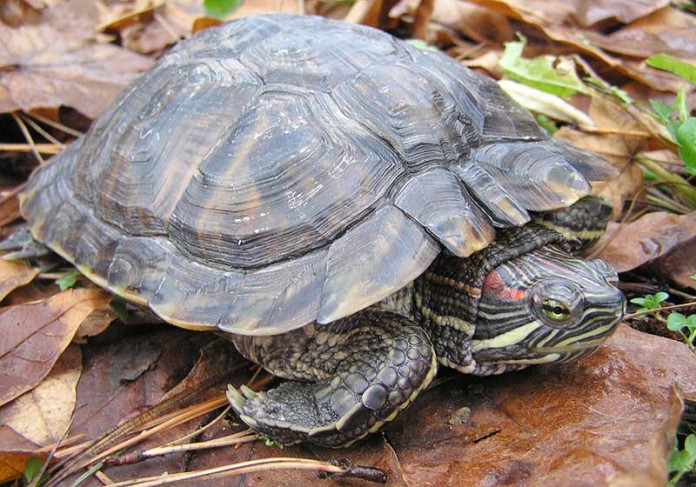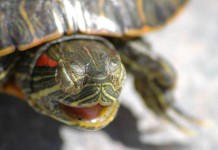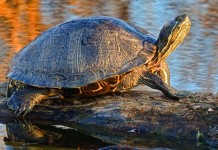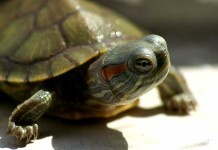Red eared slider lighting is one of those topics that comes up again and again when you are talking to fellow slider hobbyists. Should your turtle’s light be on a timer? Should you just have your slider’s sleep cycle coincide with yours? Should you breed your sliders, and if so what sort of lighting adjustments do you need to make? Here we’ll answer all these questions.
For the typical hobbyist, lighting for red eared sliders is pretty simple. It’s really up to you as far as how you want to handle the amount of lighting in any given day you want your turtles to have. In general, they should have about the same amount of exposure to ultraviolet light that they would have if they were in the wild. This can mean that you turn their light on when you get up in the morning (around the same time when the sun comes up, for many) and turn the light off around the same time when the sun goes down. It’s pretty simple and easy to remember. A slight bit of variation here isn’t a big deal, but don’t leave the turtle’s lights on overnight.
A timer is a good option for red eared slider lighting, as there will never be any chance of the timer “forgetting” to turn the slider’s lights on or off. If you are a particularly forgetful or busy person, a timer may be the best way to handle the lighting for your sliders—you don’t want them to suffer because of a mistake on your part and they need their ultraviolet lighting.
Red eared slider lighting for breeding turtles is another matter. Though it isn’t recommended that most slider owners breed their turtles (as there are more than enough sliders in the world as it is), if it’s something that you would like to undertake you have to be very particular about the light cycle. Sliders breed in the spring after a two week hibernation, so to prepare them to hibernate you need to begin adjusting the photoperiod on their lights over a period of time. Gradually lower the photoperiod over 10 days or so to mimic a change in seasons—this (and other steps you need to take outside of lighting) will let your sliders know that it’s time for hibernation. After they’ve hibernated, you can do the reverse with the lights (gradually increasing the photoperiod), among other things, to wake them up and get them ready for breeding.
Recommended: Single Bright LED Lighting System











